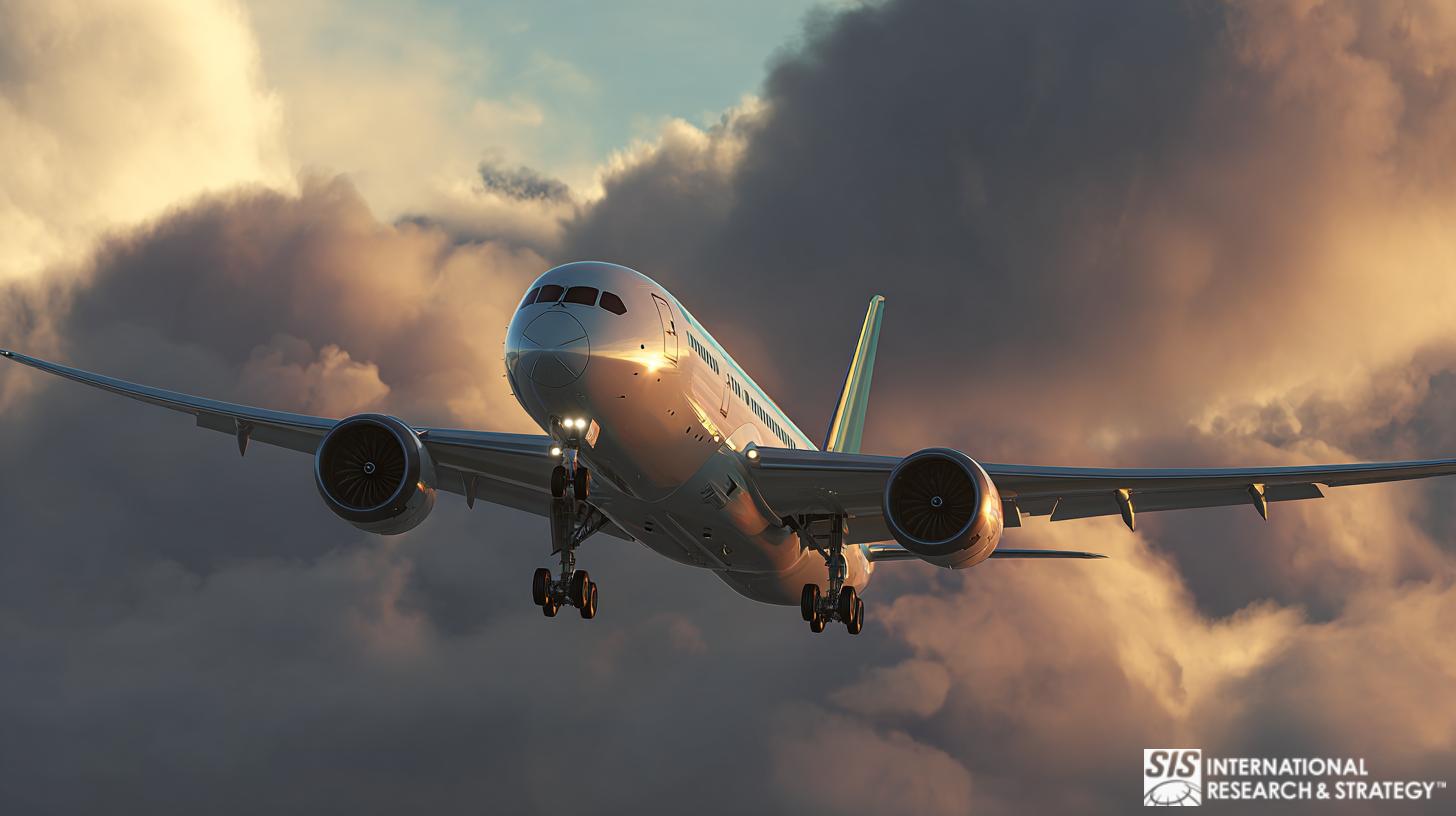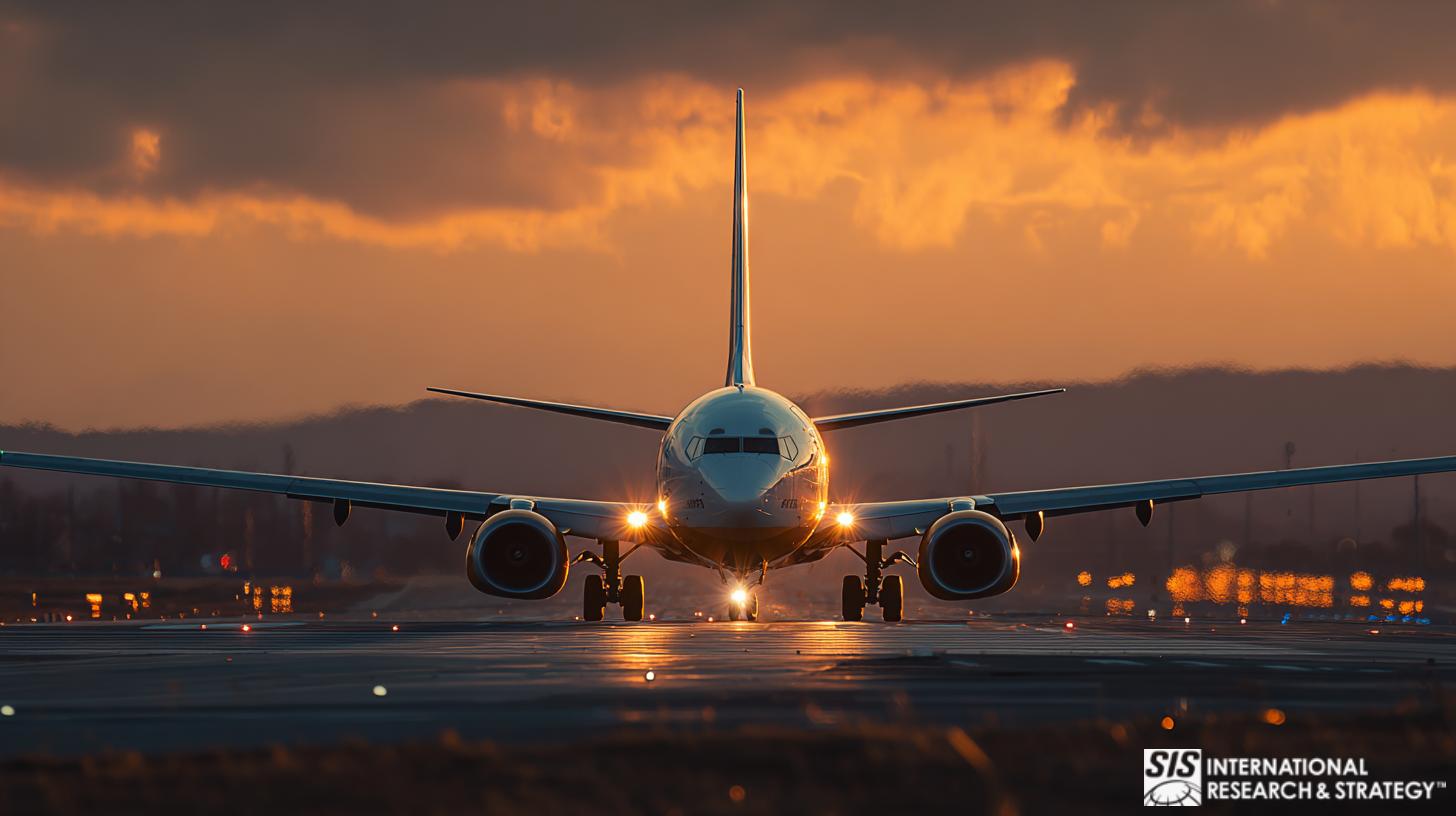
The aeronautics industry is a main contributor to national security, commerce, and transportation. It is considered as a technology driver that leads to spin-offs of advanced technology products and comprised of three major sectors: airframe, engine, and equipment.
The market is composed of civil aeronautics of aircraft used for domestic commerce and civilian air transport, and military aeronautics includes air arms for the military aviation of countries.
米国航空宇宙市場
Since World War II, U.S. aircraft, engines, and parts have dominated the domestic and foreign markets for subsonic transports, general aviation, commuter, and military aircraft. US technology and products are also the drivers for the development of global transportation infrastructure like airports and air traffic management systems.
現在、航空産業は米国の貿易収支に最も大きく貢献する産業であり、世界中の航空旅行の安全性と利便性を維持する上で重要な役割を果たしており、世界で最も孤立した地域を飛行することで米国の利益の防衛に重要な貢献をしています。

ボーイング社
The Boeing Company is one of the largest manufacturers of commercial jetliners and military aircraft. It designs and manufactures rotorcraft, electronic and defense systems, missiles, satellites, launch vehicles, and advanced information and communication systems, and operates Space Shuttle and International Space Station for NASA, and provides military and commercial airline support services. It operates in more than 90 countries around the world and is one of the largest U.S. exporters in terms of sales.
Boeing is headquartered in Chicago and employs more than 160,000 people across the United States and in 70 countries. Currently, it is expanding product lines and services developing more commercial airplanes, military platforms, defense systems, and the war fighter through network-centric operations; creating advanced technology solutions that reach across business units; e-enabling airplanes and providing connectivity on moving platforms; and arranging financing solutions for our customers.
ヨーロッパの航空宇宙市場
The region is presently struggling to keep pace with the strong increase in mobility and demand. However, the region is the main competitor of the US in terms of air travel over medium and long-haul routes. EU states are now increasing their funding to support and fund research initiatives to meet market demands and grab potential opportunities in the industry.
エアバスSAS
エアバスは、100席の単通路型ジェット旅客機A318から、現在運航中の最大の民間航空機である525席のA380まで、さまざまな製品ラインを提供する大手航空機メーカーです。
エアバスは、2009年以降、老朽化したC-130 ハーキュリーズとC-160 トランザムの代替機として、エアバス・ミリタリー社の管理下で製造されたA400M多目的軍用空中輸送機により、軍用輸送機分野に進出しました。さらに、空中給油や輸送任務用の空中タンカーは、A310とA330から派生した航空機の派生型で利用可能です。
新技術
航空学における最近の研究の重点分野には、ナノテクノロジー、開発テストと評価、ネットワーク中心の戦争、インテリジェント システム、環境航空輸送などがあります。
エネルギー最適化航空機および機器システム
Air craft technologies are related to the design and integration of energy-consuming Aircraft Equipment Systems (AES). These systems are located under the floor, inside wings, and behind panels, essentially ensuring performance, safety, and controllability.
新しい航空機の構成により、利用可能なコンポーネントとこれらのシステムの統合が進歩し、次の点で効率性が向上する可能性が生まれます。
- 環境制御と熱管理のあらゆる側面
- 飛行制御作動氷雨保護
- 着陸装置とブレーキ
- Electrical, hydraulic, and pneumatic generation and distribution
- 補助・非常用発電
- 航空機燃料システム
- エンジンサポート
- 照明、キャビン、水/廃棄物
ナノテクノロジー
航空産業における活発な研究分野には、ナノデバイスとシステム、ナノエレクトロニクス、ナノ製造、ナノ材料、ナノセンサー、ナノテクノロジーの環境、健康、安全の側面が含まれます。現在の研究活動には、複数の「ナノ」分野を組み合わせて、ナノテクノロジーの新しい相乗的な用途を生み出す能力が含まれます。
米国国家ナノテクノロジーイニシアチブは、ナノテクノロジーが、特に航空学における材料/構造およびインテリジェントバイオナノマテリアルの分野で、豊富なイノベーションを可能にする可能性を秘めている分野として位置づけています。
環境航空輸送
クリーン スカイ共同技術イニシアチブは、将来の航空輸送システムの環境への影響を最小限に抑えるために、環境に優しい航空機の設計、エンジン、システムの開発のために欧州の研究開発関係者を集めます。
Technologies will directly aim for the reduction of the amount of carbon dioxide (CO2) emitted by air transport, cutting specific emissions of nitrogen oxides (NOx) by 80% and decreasing noise levels. The targets reflect the Ultra Green High Level Target Concepts developed by the Advisory Council for Aeronautical Research in Europe (ACARE). Other focus areas include the reduction of soot, water vapour, and particulate emissions through alternative fuels; aircraft engine configurations, intelligent low-weight structures, improved aerodynamic efficiency, airport operations, and air traffic management as well as manufacturing and recycling processes.
アジアの航空宇宙市場
Relative to Europe and the Americas, Asia’s security situation is increasingly fluid. Emerging superpowers, weapons proliferation and nuclear tensions are key movements in the defense industry.
Increased nuclearization among Emerging Markets, particularly China, India, Pakistan, and Iran, has created geopolitical tensions and new demands for defense offerings. Meanwhile, political calls are growing in developed nations for collaborative efforts toward reduced nuclearization.
Conversely, weapons imports have grown dramatically in Southeast Asia over the past few years. Malaysia, Singapore and Indonesia are leading the growth with triple and double-digit growth in weapons imports.
In addition, defense budgets in Asia are on the rise. The rise is being led by regional tensions and a desire for more sophisticated technologies. Recently China has publicly announced its advanced capabilities to destroy ballistic missiles and demonstrated its defense capabilities in space.
Analysts expect increased demand from Asian governments. Asian companies may continue collaboration with established defense companies primarily in developed nations for cutting-edge weapons development.
Western aerospace and defense giants have emphasized their offerings of unmanned systems, aircraft, energy systems and cyber technology to, what industry giants consider one of their most important markets. While leadership in the defense industry is led by developed nations, industry observers are increasingly curious when Asia will be able to take a greater role in developing weaponry on a larger, more self-sufficient scale.
業界の問題
安全と生活の質
September 11, 2001 has shown the vulnerability of the air transportation system and the need for improved security. The long-term trend of growing numbers of commercial air operations demands a further reduction in the currently low rate of air transport accidents. Aviation safety and security pose numerous challenges to security personnel, operators, and aircraft designers. The public and aircrews must be protected both in the air and on the ground from danger and injury.
労働力
A serious problem facing the U.S. aeronautics industry is attracting, educating, and retaining the next generation of aeronautical engineers. The aerospace workforce is aging, and a significant number of people are nearing retirement.
生産労働者の平均年齢は、民間部門では 44 歳、防衛部門では 53 歳、NASA では 51 歳です。さらに、30 歳以下の労働者の割合は、1987 年の 18 パーセントから 1999 年の 6.4 パーセントへと、ほぼ 3 分の 2 減少しました。現在の教育「パイプライン」の学生数は、航空業界の将来のニーズを満たすのに十分ではないという懸念が高まっています。

